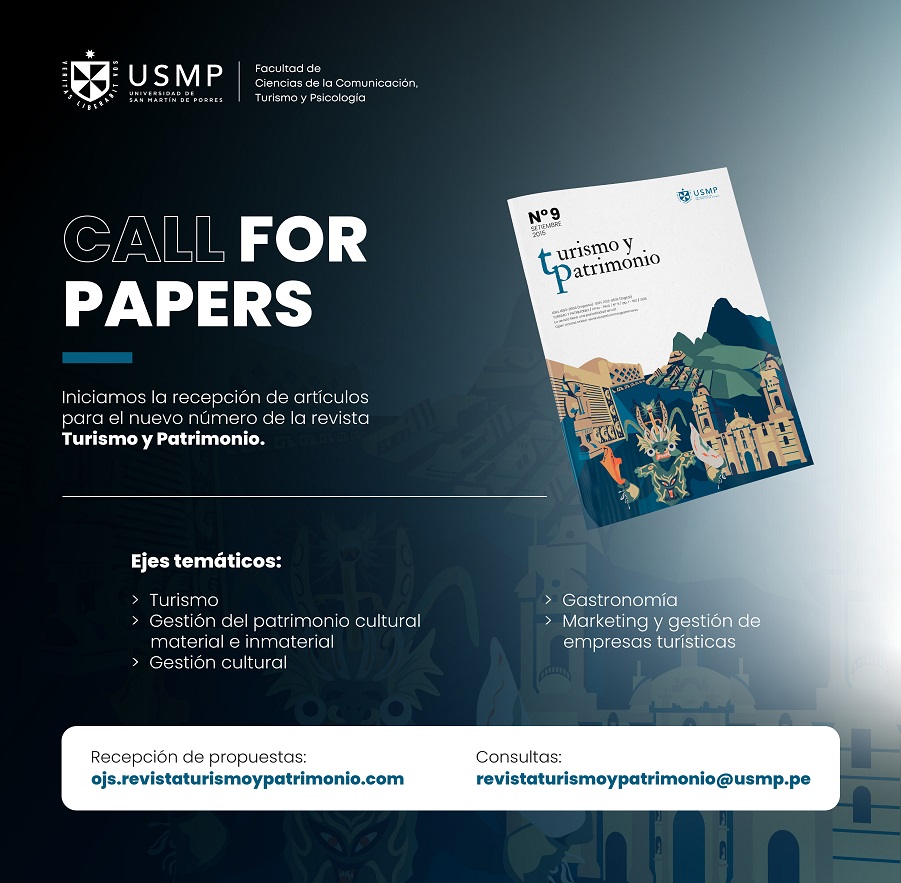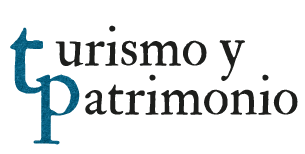Desarrollo humano en espacios turísticos
Resumen
La importancia ganada por el sector turismo en la actualidad invita a analizar su estrecha relación con el desarrollo humano y así complementar la clásica visión de desarrollo económico aplicada a la evaluación de este sector. Para ello se introduce el enfoque de desarrollo humano como expansión de capacidades, con el propósito de observar cómo es posible a partir del turismo atender de manera integral las necesidades de bienestar de las personas. Aplicando este enfoque de capacidades se analizan los procesos y elementos que definen el contexto turístico, y se identifican oportunidades y riesgos a los cuales se debe hacer frente para alcanzar experiencias enriquecedoras en él. En particular, se resalta la importancia de observar los encuentros entre locales y visitantes, y las interacciones en torno a la cultura como dinámicas facilitadoras para un desarrollo inclusivo y sostenible.
Descargas
Citas
Aguilar, M., Hiernaux, D. & Lindón, A. (2006). Lugares e imaginarios en la Metrópolis. Barcelona: Anthropos.Alkire, S. & Deneulin, S. (2009). A Normative Framework for Development. En S. Deneulin & L. Shahani (Eds.). An introduction tothe Human Development and Capability Approach. London: Earthscan.Andolina, R., Laurie, N. & Radcliffe, S. (2009). Indigenous Development in the Andes. Culture, Power, and Transnationalism. London:Duke University Press.Appadurai, A. (2004). The Capacity to Aspire: Culture and the Terms of Recognition. En V. Rae & M. Walton (Eds.). Culture andPublic Action. Stanford: Stanford University Press.Arbour, L. (2006). Foreword. En B. Andreassen & S. Marks (Eds.). Development as a Human Right. Legal, Political, and HumanDimensions. London: Harvard University Press.Arellano, A., Espinoza, C. & Howitt J. (2013). I don’t want them to suffer like I have: Porters of the Inca Trail’s views on educationand aspirations for social change. En M. Gravari, L. Bourdeau & M. Robinson (Eds.). World Heritage Sites and Tourism: Globaland Local Relations. UK: Ashgate Publishing Limited.Chambers, R. (1997). Whose Reality Counts? Putting the First Last. London: IT Press.Chopra, K. & Duraiappah, A. (2008). Operationalizing capabilities in a segmented society: the role of institutions. En F. Comim, M.Qizilbash & S. Alkire (Eds.). The Capability Approach. Concepts, Measures and Applications. Cambridge: Cambridge UniversityPress.Deneulin, S. (2008). Beyond individual freedom and agency: structures of living together in the capability approach. En F. Comim,M. Qizilbash & S. Alkire (Eds.). The Capability Approach. Concepts, Measures and Applications. Cambridge: CambridgeUniversity Press.Deneulin, S. & Shahani, L. (Eds.) (2009). An introduction to the Human Development and Capability Approach. London: Earthscan.Dreze, J. & Sen, A. (2002). India: Development and Participation. New York: Oxford University Press.Donelly, J. (1999). Human Rights, Democracy, and Development. Human Rights Quarterly, 21(3), 608-632.Evans, P. (2004). Development as Institutional Change: The Pitfalls of Monocropping and the Potentials of Deliberation. Studies inComparative International Development, 38(4), 30-52.Flacke-Neudorfer, C. (2008). Actors or victims? Actor-oriented perspectives on new forms of tourism. Chapter 14. En P. Burns & M.Novelli (Eds.). Tourism Development. Growth, Myths and Inequalities. Wallingford: CAB International.Florida, R. (2003). Cities and the Creative Class. City & Community, 2(1), 3-19.Frediani, A. (2010). Sen’s Capability Approach as a framework to the practice of development. Development in Practice, 20(2), 173-187.Huaita, A. M. (2012). Ecoturismo y desarrollo humano: el caso de una asociación privada con la Comunidad de Infierno. Turismo yPatrimonio, 7, 23-31.Hulerig, E. (2006). El retorno de la identidad étnica: Entrevista a Luis Millones. Gaceta Cultural del Perú, 24, 14-15.Johnson, S. (2009). Institutions, Markets and Economic Development. En S. Deneulin & L. Shahani (Eds.). An introduction to theHuman Development and Capability Approach. London: Earthscan.TURISMO Y PATRIMONIO, N° 8, año 2014ISSN: 1680-9556 (Impresa)ISSN: 2313-853X (Digital)
DESARROLLO HUMANO EN ESPACIOS TURÍSTICOS75Larsen, J., Urry, J. & Axhausen, K. (2007). Networks and Tourism. Mobile Social Life. Annals of Tourism Research, 34(1), 244-262.Melville, R., Selby, M. & Cliff, M. (2007). Re-telling the city. Exploring narratives of Liverpool. Impacts 08. The Liverpool Model,European Capital of Culture Research Programme.Nogués, A. M. (2008). A contextual approach to the power relation between tourism and development (Chapter 10). En P. Burns &M. Novelli (Eds.). Tourism Development. Growth, Myths and Inequalities. Wallingford: CAB International.North, D. (1990). Institutions, institutional change and economic performance. Cambridge: Cambridge University Press.Observatorio Turístico del Perú, BADATUR. Perú: Crecimiento del turismo receptor. (Último acceso: 01/04/2013). Recuperado dewww.observatorioturisticodelperu.com/mapas/ctrtotal.pdfPutnam, R. (1993). The prosperous community: social capital and public life. American Prospect, 13, 35-42.Rey, G. (2009). Industrias culturales, creatividad y desarrollo. Madrid: Agencia Española de Cooperación Internacional para elDesarrollo.Robinson, M. & Picard, D. (2006). Tourism, Culture and Sustainable Development. Programme “Culture, tourism, development”.Division of cultural policies and intercultural dialogue, Culture Sector, UNESCO. Paris: UNESCO.Rodríguez, A. (2008). Tourism, Indigenous People and Conservation in the Ecuadorian Amazon. En A. Stronza & W. Durham (Eds.).Ecotourism and Conservation in the Americas. Trowbridge: Cromwell Press.Rollefson, J., Espinoza, C. & Arellano, A. (2012). Responsible Tourism and Poverty: The Porters of the Inca Trail. En ColoquioInternational Rutas Turísticas e Itinerarios Culturales: entre la memoria y el desarrollo. Université Laval (Québec, Canadá) 13 al15 de junio de 2012. Actas del Coloquio, Volumen II, 492-499.Samman, E. & Santos, M. (2009). Agency and Empowerment. A review of concepts, indicators and empirical evidence. Draft paperprepared for the 2009 Human Development Report in Latin America and the Caribbean. Oxford Poverty and HumanDevelopmentInitiative, University of Oxford.Santana, A. (2003). Patrimonios culturales y turistas: Unos leen lo que otros miran. Pasos. Revista de Turismo y Patrimonio Cultural,1(1), 1-12.Sen, A. (1999). Development as freedom. New York: Alfred A. Knopf.Sen, A. (2004). How does culture matter? En V. Rao & M. Walton (Eds.). Culture and Public Action. Stanford: Stanford UniversityPress.Sen, A. (2006). Identity and Violence. London: Penguin Books.Spence, R. (2009). Economic Growth. En S. Deneulin & L. Shahani (Eds.). An introduction to the Human Development andCapabilityApproach. London: Earthscan.Telfer, D. (2003). Development Issues in Destination Communities. En S. Singh, D. Timothy & R. Dowling. Tourism in DestinationCommunities. Wallingford: CABI Publishing.UNDP (1990). Human Development Report 1990. Concept and Measurement of human development. Chapter 1: Defining and measuringHuman Development. Nueva York: United Nations Development Programme.Urbano, H. (2012). La identidad en búsqueda de un patrimonio en los espacios turísticos. Cultura, 26, 179-189.Urry, J. (2002a). Consuming places. New York: Taylor & Francis e-Library.Urry, J. (2002b). Mobility and connections. (Último acceso: 01/04/2013). Recuperado de www.ville-en-mouvement.com/telechargement/ 040602/mobility.pdf
En caso de que el manuscrito sea aprobado para su publicación, los autores/as conservan los derechos de autor y ceden a la revista el derecho de la publicación, edición, reproducción, distribución, exhibición y comunicación tanto en el país de origen como en el extranjero, mediante medios impresos y electrónicos en diferentes bases de datos. Por lo tanto, se establece que después de la publicación de los artículos, los autores/as pueden realizar otros acuerdos independientes o adicionales para la difusión no exclusiva de la versión del artículo publicado en la presente revista (por ejemplo, en libros o repositorios institucionales), siempre que se indique explícitamente que el trabajo fue publicado por primera vez en Turismo y Patrimonio.






















.jpg)





 Los artículos publicados se encuentran disponibles en acceso abierto bajo la licencia
Los artículos publicados se encuentran disponibles en acceso abierto bajo la licencia 
